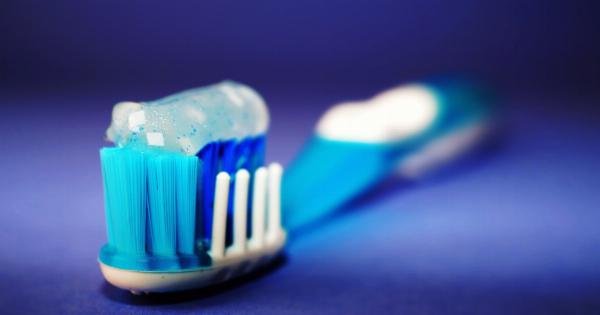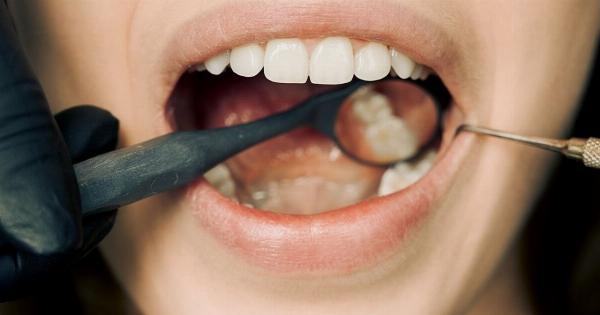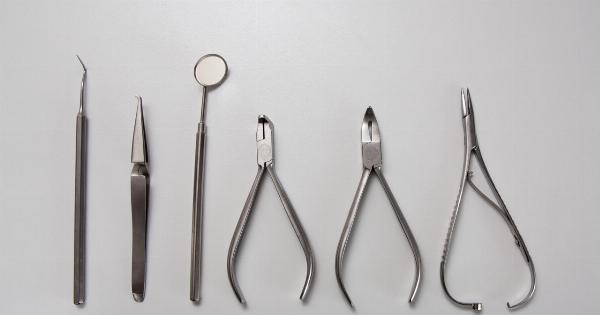Oral health plays a crucial role in our overall well-being, as it directly affects our ability to eat, speak, and express ourselves confidently. However, maintaining good oral hygiene is often overlooked or neglected by many individuals.
One simple yet effective tool that can make a significant difference in preventing oral diseases is daily dental thread use. In this article, we will explore the importance of dental flossing, its benefits, and how to incorporate it into our daily oral care routine.
The Basics of Dental Thread
Dental thread, also known as dental floss, is a thin thread made of either nylon or polyethylene.
It is designed to remove plaque and food particles that may get stuck between our teeth or along the gumline, areas where our toothbrushes struggle to reach. By sliding the thread gently between our teeth, we can effectively dislodge debris, reduce plaque buildup, and minimize the risk of various oral diseases.
The Importance of Dental Flossing
Dental flossing is an essential aspect of maintaining optimal oral health. Here are some key reasons why dental thread should be a part of our daily oral care routine:.
1. Prevention of Cavities
Regular flossing is crucial for preventing cavities. When food particles are left between our teeth, they provide a feeding ground for harmful bacteria present in our mouths.
As these bacteria break down the food particles, they release acids that can erode tooth enamel and lead to the formation of cavities. Dental flossing helps in removing these food particles, preventing bacterial growth, and reducing the risk of cavities.
2. Gum Disease Prevention
Gum disease, also known as periodontal disease, is a common oral health problem that affects the gum tissue and can lead to tooth loss if left untreated. Plaque buildup around the gumline is a significant contributor to gum disease.
Dental flossing effectively removes plaque from these areas, reducing inflammation, and helping to prevent gum disease.
3. Fresher Breath
Bad breath, or halitosis, can be embarrassing and often results from poor oral hygiene. Food particles trapped between the teeth contribute to the growth of odor-causing bacteria, which release foul-smelling gases.
Dental flossing helps to eliminate these particles, reducing the chances of bad breath and keeping our breath fresh and pleasant.
4. Stain Prevention
Certain foods, beverages, and habits like smoking can stain our teeth over time. When dental plaque is not effectively removed, it can harden and form tartar, which is more challenging to remove and can contribute to tooth discoloration.
Dental flossing helps in preventing plaque buildup, reducing the risk of tartar formation, and preserving the natural whiteness of our teeth.
5. Improved Overall Health
Poor oral health has been linked to various systemic diseases, including cardiovascular diseases, diabetes, respiratory infections, and even pregnancy complications.
Maintaining good oral hygiene, including regular dental flossing, can help lower the risk of these health conditions by reducing the overall bacterial load in our mouths and preventing the spread of harmful bacteria throughout our bodies.
How to Effectively Use Dental Thread
To reap the benefits of dental thread, it is crucial to use it correctly. Follow these steps for effective dental flossing:.
1. Choose the Right Dental Thread
There are different varieties of dental thread available, such as waxed or unwaxed, flavored or unflavored, and varying thicknesses. Choose the type of dental floss that best suits your preference and needs.
If you have any doubts, consult your dentist, who can guide you in selecting the right dental thread for your oral health.
2. Correct Flossing Technique
Take about 18 inches (45 cm) of dental thread and wind most of it around the middle fingers of both hands, leaving about 1-2 inches (2-5 cm) in between.
Hold the dental floss between your thumbs and index fingers, leaving a firm but gentle grip that allows for easy movement between teeth. Gently insert the dental floss between two teeth, using a gentle back-and-forth motion to move the thread up and down against the sides of each tooth. Curve the floss around each tooth in a C shape to ensure thorough cleaning along the gumline.
3. Be Gentle and Avoid Snapping
While it is important to be thorough, it is equally essential to be gentle when flossing. Avoid snapping the dental thread against your gums, as it can cause irritation or even damage sensitive gum tissue.
If you find it difficult to maneuver the dental floss between certain teeth, try using a gentle sawing motion or an alternative flossing tool, such as a water flosser or interdental brushes.
4. Clean All Sides of Each Tooth
Ensure that you clean all sides of each tooth by moving to a fresh section of dental thread after cleaning each tooth.
Using the same section of floss to clean multiple teeth can redistribute bacteria and food particles, defeating the purpose of flossing. Take your time and floss thoroughly, reaching the back teeth as well.
5. Rinse and Repeat
After flossing, rinse your mouth with water or mouthwash to remove any loosened debris. Remember to floss at least once a day, ideally before brushing your teeth, to ensure a thorough oral hygiene routine.
Conclusion
Daily dental thread use is a simple yet highly effective practice that can help us keep various oral diseases at bay.
By incorporating dental flossing into our daily oral care routine, we can prevent cavities, gum disease, bad breath, tooth stains, and even protect our overall health. So, let’s make dental flossing a habit and smile confidently with a healthy and disease-free mouth!.



























